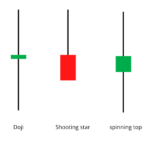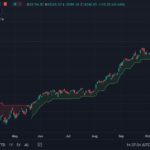The Average Directional Index is part of a group of directional movement indicators that make up a trading system that is created by Welles Wilder. In this group, there are also minus directional indicators and plus directional indicators. Average Directional Index measures the strength of a trend while the other two indicators i.e. plus directional indicator and minus directional indicator determine the direction of that trend. The strength and direction of the trend can be ascertained by using this entire group together.
What do you need to know?
- ADX system consists of 3 things – ADX, +DI, and -DI
- ADX is used to determine the strength or weakness of a trend, not its direction.
- ADX above 25 indicates that the trend is strong, while ADX below 20 indicates that the trend is not strong.
- ADX between 20 and 25 doesn’t tell anything clearly.
- When ADX is 25 and +DI is crossing –DI, it should be considered as a buy signal.
- If ADX is 25, and -DI is crossing +DI, it should be considered a sell signal.
- When the sell and buy signals are found, then the stoploss should be set and the trade should be done.
- The candle which is indicating to buy will have a low stoploss and the candle which is giving a sell signal will have a high stoploss.
- This trade will be valid until the stoploss is broken.
- The look back period for ADX is usually 14 days.
How to Use Average Directional Index – ADX
Load the ADX indicator. The lookback is already provided on the tradingview and other technical software, but you can change it.

You can color all three parts of the ADX system differently. To load the indicator, click on Create.

When you load the ADX indicator, it will load under the instrument. The black line shows the ADX. Whenever you are looking for a crossover, note that the ADX is above 25.

Gaurav Heera is a leading stock market educator, offering the best stock market courses in Delhi. With expertise in trading, options, and technical analysis, he provides practical, hands-on training to help students master the markets. His real-world strategies and sessions make him the top choice for aspiring traders and investors.




